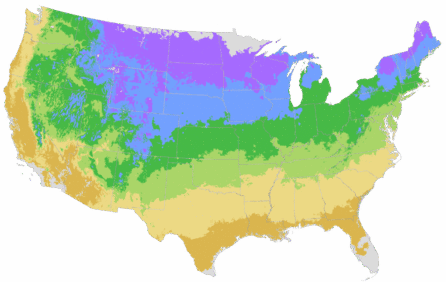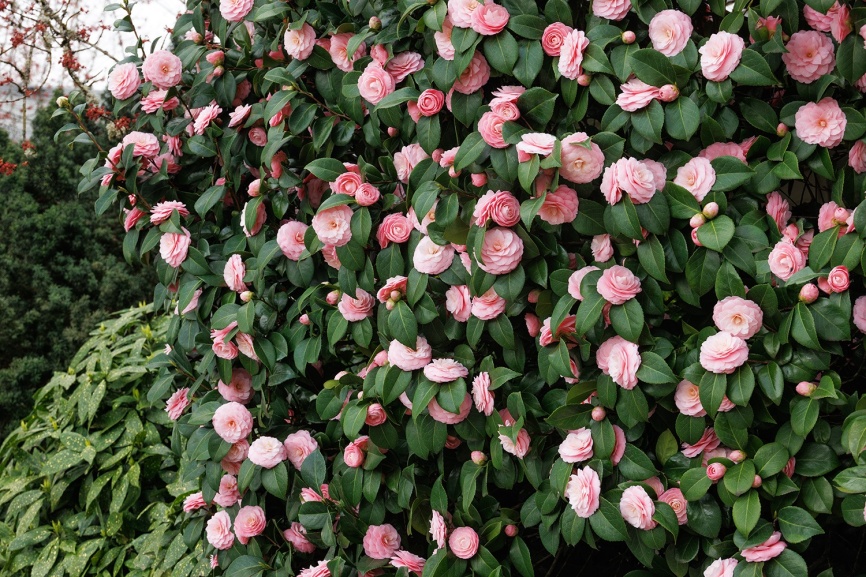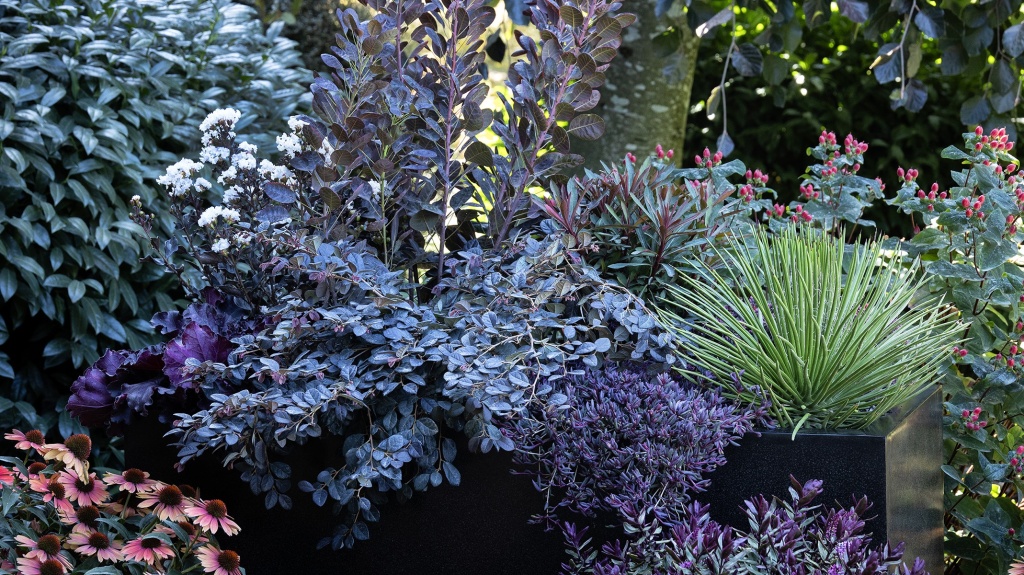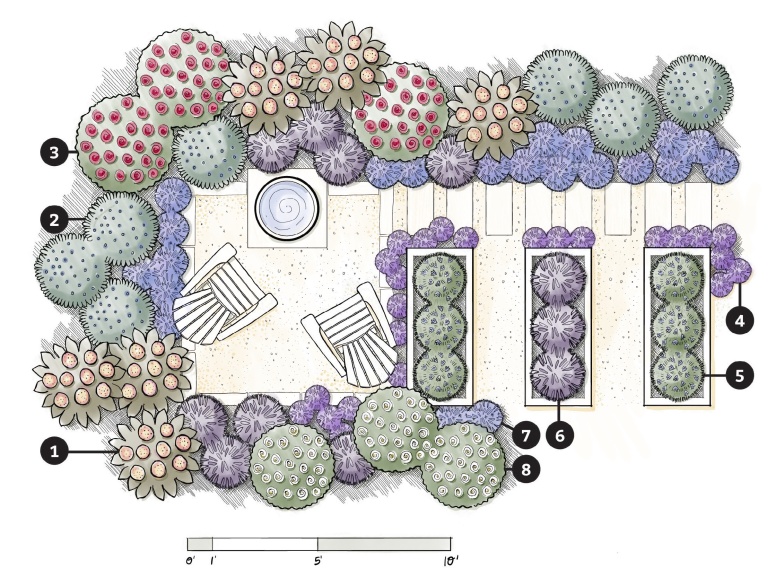You're growing in this Zip Code:
Change LocationDiscover Plants for Your Area
Walberton's® Plumtastic Spirea
Spiraea japonica 'Walplum' PP #29,405
Retailers Near You
| Description | A very tidy and compact deciduous shrub with round clusters of vibrant purple-red buds that open to bright cerise-colored flowers. Blooms flush continuously from summer into fall, offset by the rich purple new foliage that emerges throughout the growing season, aging to a deep green. Perfect for low borders, edging pathways, or container plantings. |
|---|---|
| Bloom Time | Summer through fall |
| Deciduous/Evergreen | Deciduous |
| Special Features | Attracts Butterflies, Dramatic Foliage Color, Easy Care, Attracts Pollinators, Compact Form |
| Problems/Solutions | Erosion Control, Rabbit Resistant, Tolerates Urban Pollution |
| Growth Rate | Moderate |
| Flower Attributes | Flowers for Cutting, Long Bloom Season, Repeat Flowering, Showy Flowers |
| Patent Act | Asexual reproduction of plants protected by the Plant Patent Act is prohibited during the life of the patent. |
| Landscape Use | Border, Container, Edging |
| Design Ideas | An excellent-low growing shrub ideal for filling in skimpy beds and borders, screening the fronts of old shrubs with bare legs. Line them up along driveway or sidewalk for curb appeal. |
| Flower Color | Pink |
| Foliage Color | Dark Green |
| Companion Plants | Barberry (Berberis); Potentilla (Potentilla); Weigela (Weigela); Salvia (Salvia); Coneflower (Echinacea) |
| Care Instructions | Grows easily in average, well-drained soils; tolerates a range of soil types. Water regularly in first growing season to establish root system. Once established, prefers regular water but tolerates mild, periodic dry spells. Feed before new growth begins in spring. Remove spent blooms after flowering. May grow larger in highly fertile soils. |
| History | This colorful cultivar was bred by David Tristram at Walburton Nursery in West Sussex, England. Previously, Monrovia mistakenly had the mature size at 16 in tall and wide, which is actually the size after one year. It was corrected in June of 2023. |
| Lore | The S. japonica clan is a large group of ornamental shrubs that fall into the Rose Family. It's named for the European species from the Greek speria or wreath attesting to its whip like growths bearing white flowers worn at weddings. But the Japonicas came about far later and first identified by Carl Thunberg, among the earliest western plant hunters to botanize Japan. However, plants were not introduced to the West until about 1870. Native Spiraeas of Europe were well known as the source of white flowered wreaths worn by country brides in spring weddings. |
| Description | A very tidy and compact deciduous shrub with round clusters of vibrant purple-red buds that open to bright cerise-colored flowers. Blooms flush continuously from summer into fall, offset by the rich purple new foliage that emerges throughout the growing season, aging to a deep green. Perfect for low borders, edging pathways, or container plantings. |
|---|---|
| Bloom Time | Summer through fall |
| Deciduous/Evergreen | Deciduous |
| Special Features | Attracts Butterflies, Dramatic Foliage Color, Easy Care, Attracts Pollinators, Compact Form |
| Problems/Solutions | Erosion Control, Rabbit Resistant, Tolerates Urban Pollution |
| Growth Rate | Moderate |
| Flower Attributes | Flowers for Cutting, Long Bloom Season, Repeat Flowering, Showy Flowers |
| Patent Act | Asexual reproduction of plants protected by the Plant Patent Act is prohibited during the life of the patent. |
| Landscape Use | Border, Container, Edging |
|---|---|
| Design Ideas | An excellent-low growing shrub ideal for filling in skimpy beds and borders, screening the fronts of old shrubs with bare legs. Line them up along driveway or sidewalk for curb appeal. |
| Flower Color | Pink |
| Foliage Color | Dark Green |
| Companion Plants | Barberry (Berberis); Potentilla (Potentilla); Weigela (Weigela); Salvia (Salvia); Coneflower (Echinacea) |
| Care Instructions | Grows easily in average, well-drained soils; tolerates a range of soil types. Water regularly in first growing season to establish root system. Once established, prefers regular water but tolerates mild, periodic dry spells. Feed before new growth begins in spring. Remove spent blooms after flowering. May grow larger in highly fertile soils. |
|---|
| History | This colorful cultivar was bred by David Tristram at Walburton Nursery in West Sussex, England. Previously, Monrovia mistakenly had the mature size at 16 in tall and wide, which is actually the size after one year. It was corrected in June of 2023. |
|---|---|
| Lore | The S. japonica clan is a large group of ornamental shrubs that fall into the Rose Family. It's named for the European species from the Greek speria or wreath attesting to its whip like growths bearing white flowers worn at weddings. But the Japonicas came about far later and first identified by Carl Thunberg, among the earliest western plant hunters to botanize Japan. However, plants were not introduced to the West until about 1870. Native Spiraeas of Europe were well known as the source of white flowered wreaths worn by country brides in spring weddings. |
Retailers Near You
About Us
We have been pioneers and craftsmen in the art of growing plants for nearly
100 years. Since our founding in Southern California by Harry E. Rosedale, Sr.
in 1926, we have been absolutely dedicated and obsessed with quality.
We have been pioneers and craftsmen in the art of growing plants for nearly 100 years. Since our founding in Southern California by Harry E. Rosedale, Sr. in 1926, we have been absolutely dedicated and obsessed with quality.








